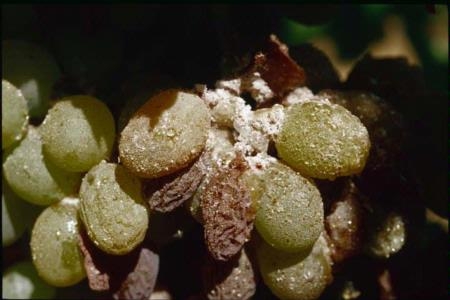Two relatively new variants of grape leafroll virus, known as V3 and V5, are alarming some winegrape growers in California's famed wine country, according to an article yesterday in the San Francisco Chronicle.
The virus is spread by grafting infected cuttings and by the feeding of vine mealybug. It won't kill the vineyard, but it will prevent normal sugar development and reduce yields.
The Chron article, written by Alice Feiring, said the late Ed Weber, Napa County's previous UC Cooperative Extension viticulture farm advisor, and Deborah Golino, director of Foundation Plant Services at UC Davis, in 2002 began a four-year study of the virus in an Oakville vineyard. During the study, there was a threefold increase in the number of infections in that vineyard alone.
UC Berkeley biological control specialist Kent Daane told the reporter that pesticides are not effective against vine mealybug because the bugs hide under leaves. A better control measure, Daane believes, is pheromone mating-disruption.
Nevertheless, Golino told the paper there will not be a fast fix. She encourages growers to purchase certified virus-free vines, "even when it means giving up field selections that have been a longtime part of a winemaking program."
The article also reported there is circumstantial evidence that shows vineyards managed organically might have natural predators for the vine mealybug.
"We don't see the problem in our organic vineyards as we do in our conventional," a farmer was quoted in the story. "But I'm not prepared to say that's the reason."
Attached Images:
